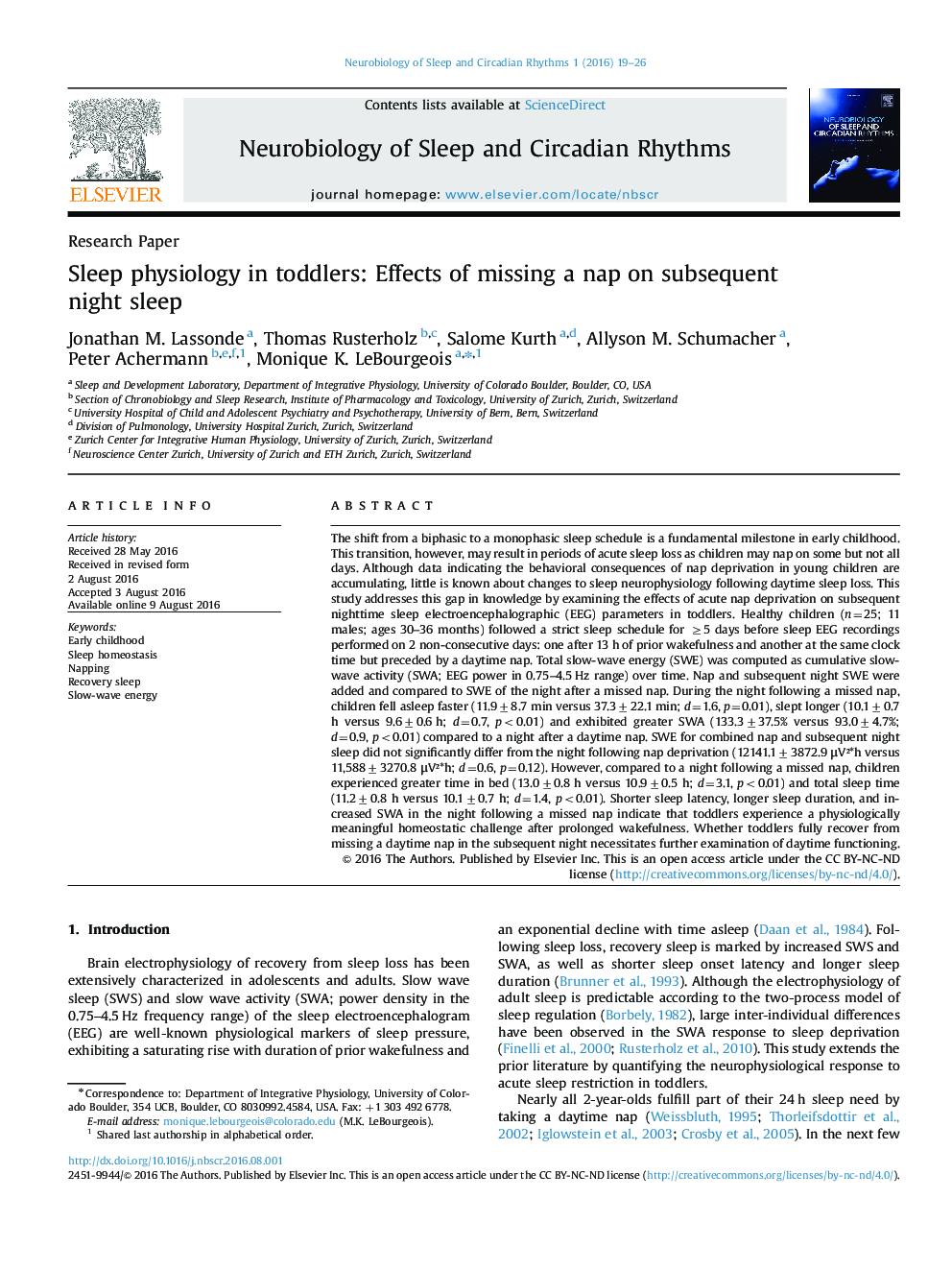| کد مقاله | کد نشریه | سال انتشار | مقاله انگلیسی | نسخه تمام متن |
|---|---|---|---|---|
| 4318505 | 1613189 | 2016 | 8 صفحه PDF | دانلود رایگان |
• During nighttime sleep following a missed nap, 2-year-olds experience shorter sleep onset latency and increased sleep duration, slow wave sleep, slow wave activity, and slow-wave energy (cumulative slow wave activity), compared to a night of sleep following a daytime nap.
• Slow-wave energy is similar in 24 h sleep recordings on a day containing nap and night sleep compared to a day containing only night sleep.
• Children show large inter-individual variability in neurophysiological recovery from a missed nap, as measured by the sleep EEG.
The shift from a biphasic to a monophasic sleep schedule is a fundamental milestone in early childhood. This transition, however, may result in periods of acute sleep loss as children may nap on some but not all days. Although data indicating the behavioral consequences of nap deprivation in young children are accumulating, little is known about changes to sleep neurophysiology following daytime sleep loss. This study addresses this gap in knowledge by examining the effects of acute nap deprivation on subsequent nighttime sleep electroencephalographic (EEG) parameters in toddlers. Healthy children (n=25; 11 males; ages 30–36 months) followed a strict sleep schedule for ≥5 days before sleep EEG recordings performed on 2 non-consecutive days: one after 13 h of prior wakefulness and another at the same clock time but preceded by a daytime nap. Total slow-wave energy (SWE) was computed as cumulative slow-wave activity (SWA; EEG power in 0.75–4.5 Hz range) over time. Nap and subsequent night SWE were added and compared to SWE of the night after a missed nap. During the night following a missed nap, children fell asleep faster (11.9±8.7 min versus 37.3±22.1 min; d=1.6, p=0.01), slept longer (10.1±0.7 h versus 9.6±0.6 h; d=0.7, p<0.01) and exhibited greater SWA (133.3±37.5% versus 93.0±4.7%; d=0.9, p<0.01) compared to a night after a daytime nap. SWE for combined nap and subsequent night sleep did not significantly differ from the night following nap deprivation (12141.1±3872.9 μV²*h versus 11,588±3270.8 μV²*h; d=0.6, p=0.12). However, compared to a night following a missed nap, children experienced greater time in bed (13.0±0.8 h versus 10.9±0.5 h; d=3.1, p<0.01) and total sleep time (11.2±0.8 h versus 10.1±0.7 h; d=1.4, p<0.01). Shorter sleep latency, longer sleep duration, and increased SWA in the night following a missed nap indicate that toddlers experience a physiologically meaningful homeostatic challenge after prolonged wakefulness. Whether toddlers fully recover from missing a daytime nap in the subsequent night necessitates further examination of daytime functioning.
Journal: Neurobiology of Sleep and Circadian Rhythms - Volume 1, Issue 1, October 2016, Pages 19–26
